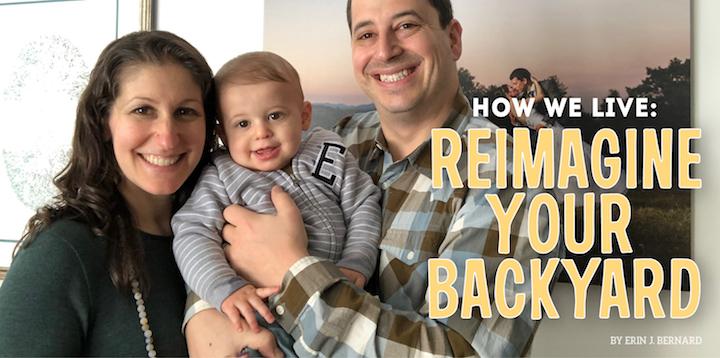
We’ve covered the various ways Portland families are dealing with our housing market. Can we build our way to more equal housing opportunities? One Portland architect makes a case for conscious density.
If your backyard screams “neglected tangle of weeds” more than “lovingly maintained outdoor gathering space,” Portland architect (and father of two) Eli Green would like a word.
Green has spent a lifetime moving into, out of, and back into this city. He’s lived in all five of its quadrants (yes, there are five — count ‘em, Northwest, Northeast, Southeast, Southwest and North) and currently owns a home in inner Southeast. His career in architecture has given him a front-row seat to Portland’s heated affordable-housing debate.
“The tension I see is the need to house all these people while keeping Portland the way it is — that feel, that energy,” he says.
Density is emerging as a primary strategy for matching supercharged population growth, but can we really squeeze more living into less space without sacrificing the quality of our neighborhoods?
Green thinks we can, and at SQFT Studios, the Portland-based design-and-build company he co-owns with fellow architect Schuyler Silva, the goal is to help local families transform underused outdoor areas into functional living and working spaces.
Portlanders are looking to do many things with these structures: house aging parents or grandparents, generate rental income, or create stand-alone work studios and simple guest suites.
Compact builds — think ADUs and freestanding accessory structures — are the studio’s bread and butter, but preserving Portland requires more than just going tiny, says Green; what you build has got to blend seamlessly with its surroundings without sacrificing functionality or flexibility.
The needs of a city, too, change over time. The Portland aesthetic will no doubt keep on shifting as its population surges, thinking on affordable housing evolves, and the availability and quality of standard building materials like lumber fluctuates. But this is also a culture of makers and hosts, long enamored with the Craftsman style and populated by skilled craftspeople eager to collaborate on the creation of beautiful, sustainable structures. For Green, that’s a heritage worth honoring.
Spackle the ethos over with endless city blocks of drab apartment towers instead, and you jeopardize far more than some idealized aesthetic, he warns: “These [kinds of] buildings lead to a loss of history — a loss of connection — and that untethers the community.”
From what Green’s seeing, plenty of Portland families want to be part of promoting a different brand of density, and they’re finding that their very own yards are, in fact, a great place to start.
“I love the ‘In my backyard’ [IMBY] idea,” he says. “It’s about helping Portland stay Portland.”
It’s also about acknowledging that the choices we make today about who we house, and how, and where, will ripple outward across the city long after we’re gone.
That’s a big legacy, and a big responsibility, too, says Green: “The reality is, our actions are what’s going to be passed on. And what we choose to build is a big part of that.”
Erin J. Bernard is a freelance writer and editor living the dream in Northeast Portland, where she resides with her husband and their bossy 2-year-old daughter. She spends her (nonexistent) free time eating tamales, scoping out garage sales, and blogging about the creative life at ejbwritingstudio.com.
- Family-Friendly Sledding, Skiing and Snowboarding in Oregon - December 11, 2023
- Road Trip Ideas: PNW Magic - May 12, 2022
- Neighborhood We Love: Happy Valley - January 5, 2022





